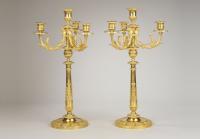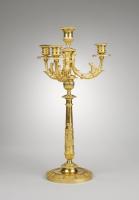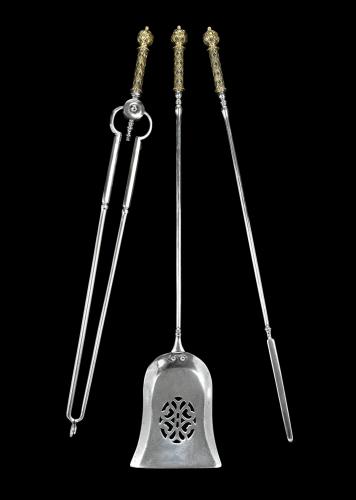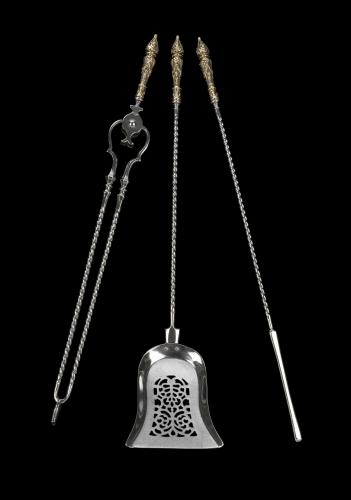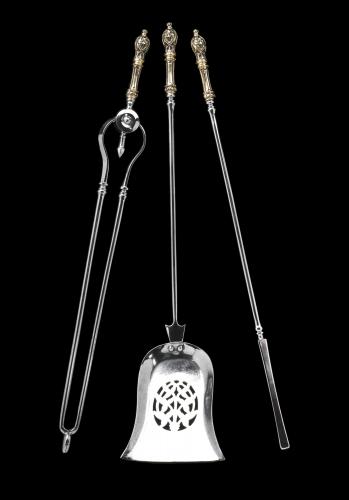
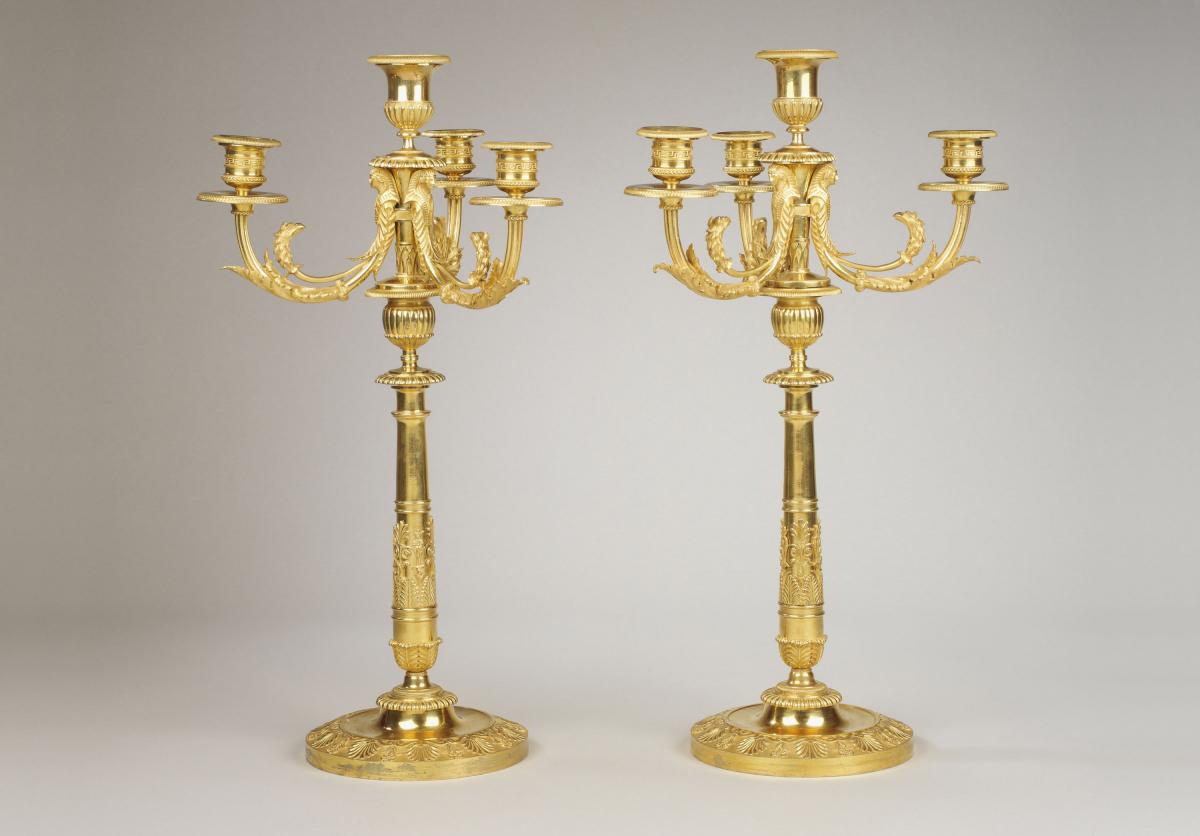
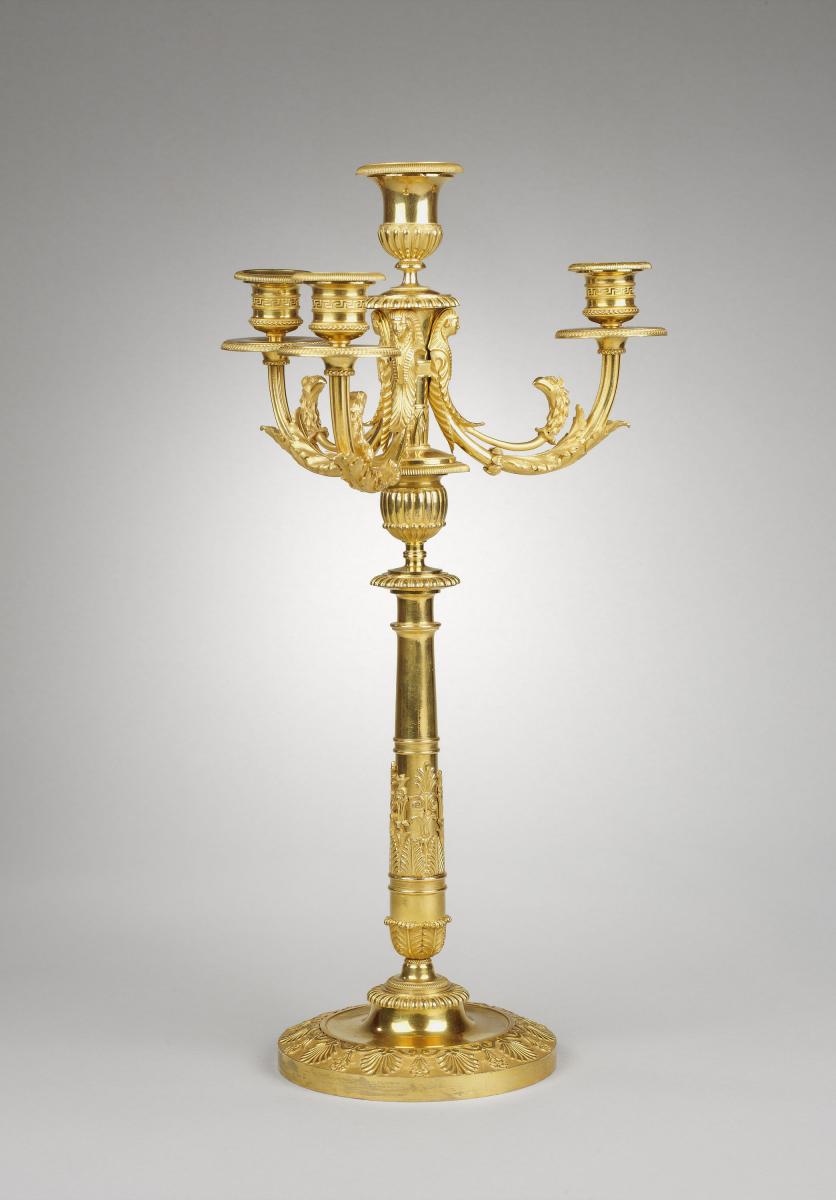
Price on application
This object is eligible for a Certificate of BADA Provenance
The BADA Standard
- Since 1918, BADA has been the leading association for the antiques and fine art trade
- Members are elected for their knowledge, integrity and quality of stock
- Our clients are protected by BADA’s code of conduct
- Our dealers’ membership is reviewed and renewed annually
- Bada.org is a non-profit site: clients deal directly with members and they pay no hidden fees
A Pair of Directoire Ormolu Three Light Candelabra, Attributed to Pierre-Philippe Thomire, Circa 1800.
Each with a ribbed nozzle, on an anthemion and acanthus columnar support and similarly decorated base, surmounted by a central urn nozzle above three Pharaonic heads, issuing acanthus and griffin heads and terminating in Greek key nozzles.
The Sphinx was regarded as a symbol of enigmatic wisdom. Its original function was to guard temples and tombs. The Egyptian sphinx, with characteristic head-dress and often with wings, was a common motif in the early 19th century. After Napoleon’s campaign in Egypt, it acquired a new significance. The Egyptian Campaign (1798–1801) was Napoleon Bonaparte's unsuccessful campaign in Egypt and Syria to protect French trade interests and undermine Britain's access to India.
Goldsmith Pierre-Philippe Thomire (1751–1843) drew recognition as a skilled maker of bronze mounts at this time. He began his career under the sculptors Pajou and Houdon, casting portrait bronzes, then turned to work as a ciseleur under Gouthiere. In 1783 he was chosen to succeed Duplessis at the Sèvres manufactory where he specialized in creating bronze mounts for porcelain. Production at Sèvres almost ceased during the Revolution, but was revived under the Directoire and Thomire was able to resume his decorative bronze work.
Jean-Neree Ronfort (Lucy Morton, 1999, no. 57, pp.153-7) says of Thomire: “The unique characteristics of Thomire’s work and his immense talent arise from a combination of skills possessed by no other craftsmen of his period. His was the art of the sculptor, taught by both Auguste Pajou and Jean-Antoine Houdon, the art of the founder who, according to Houdon, was the only craftsman to achieve perfection, the art of the chaser who was taught by his father and the art of the gilder. Due to the restrictions of guild regulations he was not able to develop the latter skill to its full potential until after the Revolution but again, he attained perfection.”
Dimensions
10 x 20 in high (26 x 52 cm)The BADA Standard
- Since 1918, BADA has been the leading association for the antiques and fine art trade
- Members are elected for their knowledge, integrity and quality of stock
- Our clients are protected by BADA’s code of conduct
- Our dealers’ membership is reviewed and renewed annually
- Bada.org is a non-profit site: clients deal directly with members and they pay no hidden fees


